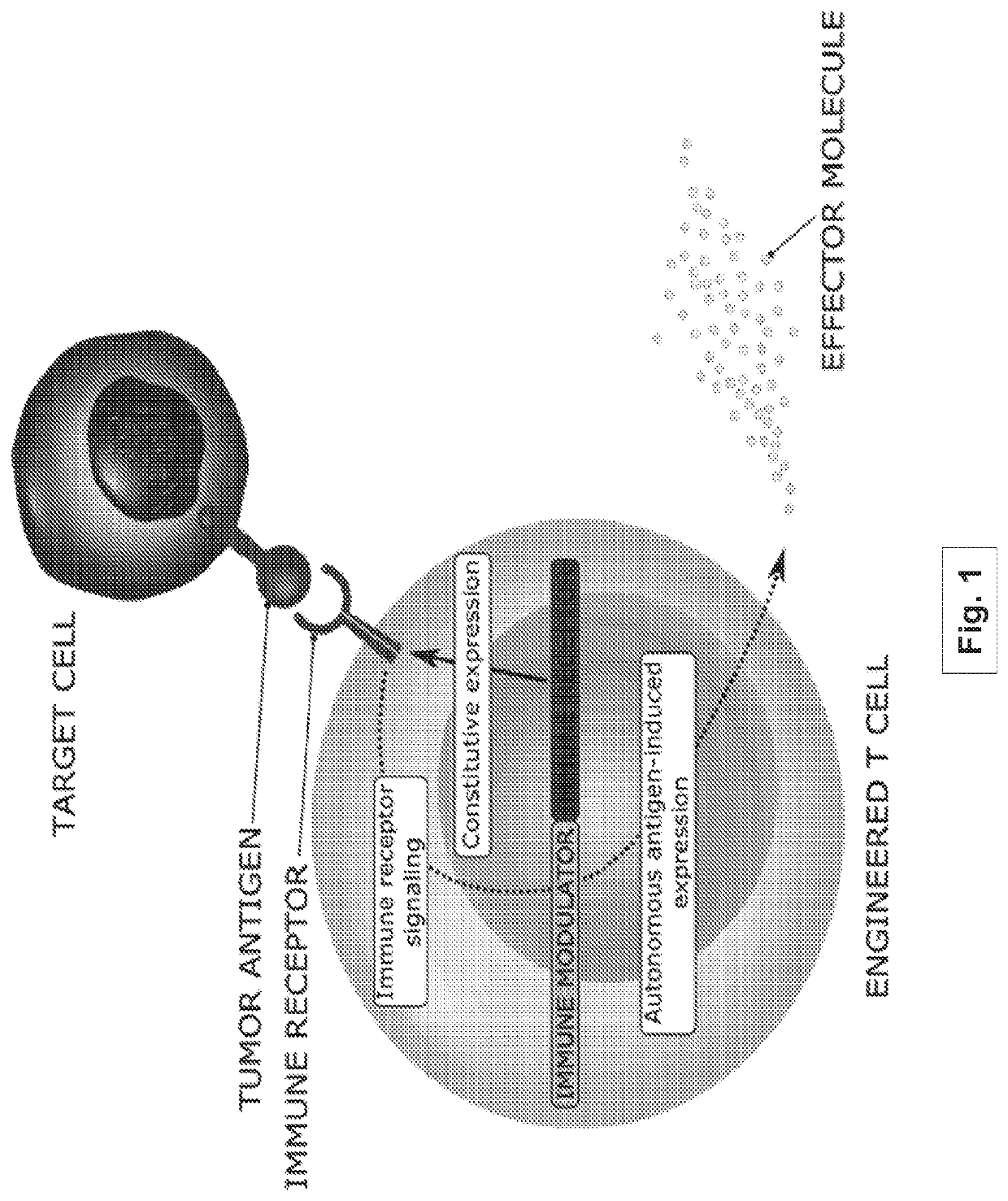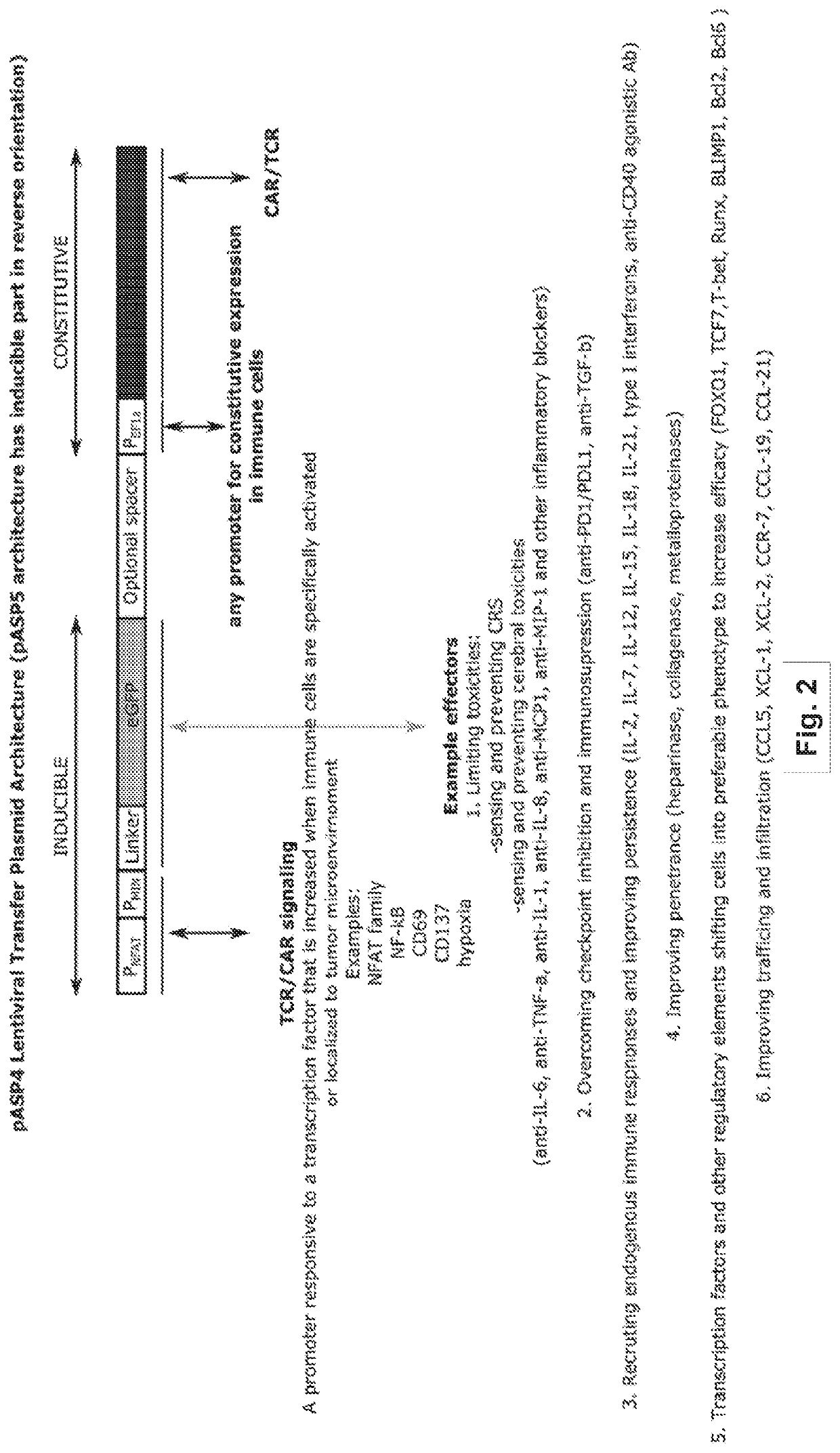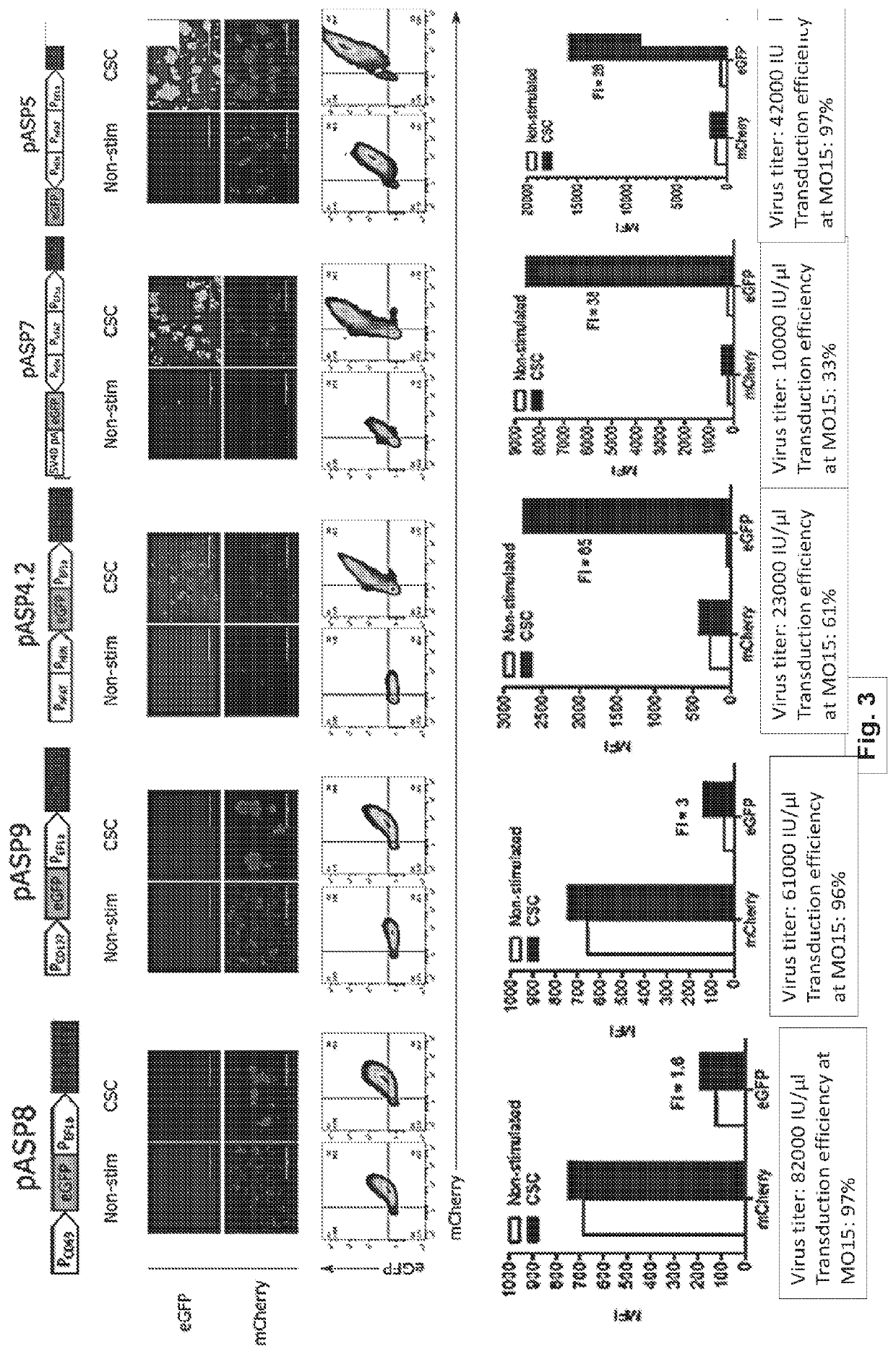Methods and compositions for programming t cell differentiation and enhancing t cell proliferation
a technology of t cell differentiation and composition, which is applied in the direction of drug compositions, cell culture active agents, peptides, etc., can solve the problems that intrinsic dysfunction limits the clinical efficacy of car t cells and thus far the success of car t therapy in the solid tumor setting
- Summary
- Abstract
- Description
- Claims
- Application Information
AI Technical Summary
Benefits of technology
Problems solved by technology
Method used
Image
Examples
example 2
s NFAT-Driven Expression of eGFP and Constitutive Expression of mCherry from a Single Lentiviral Vector in Jurkat Cell Line
[0335]As a proof of principle, the lentiviral system described herein enabled constitutive production of mCherry and inducible expression of eGFP in transduced Jurkat cells as measured by fluorescence microscopy and flow cytometry (FIG. 3). Cells were non-specifically activated with CSC (ionomycin and phorbol myristate acetate) which short-circuits Ca2+ TCR signaling in T cells. Different promotor elements that are active specifically in the activated T cells were tested. Architectures pASP8 and pASP9 comprised CD69 and CD137 promoters respectively. ON / OFF ratio in both examples was low (from 1.5-3) and additionally, CD69 promoter shown substantial leakiness. Architecture pASP4.2, comprising synthetic NFAT promoter linked to the optimized minimal promoter (PMIN) enabled medium ON state while it remained silent in the absence of the trigger signal, which is attri...
example 3
s NFAT-Driven Expression of eGFP and Constitutive Expression of mCherry from a Single Lentiviral Vector in Primary Human T Cells
[0337]To demonstrate that the developed system works also in therapeutically used primary T cells with more relevant inducers resampling TCR signalling, primary donor-derived T cells were activated, transduced with constructs pASP8, pASP9, pASP4.2, pASP7 and pASP5 and expanded according to the standard protocol. Engineered cells were rested for 14 days to return activation state to the basal levels and then stimulated with CSC, anti-CD3 / CD28 beads and anti-CD3 / CD28 antibodies-coated plates. Results recapitulated our findings from Jurkat cell lines, showing reliable constitutive expression of mCherry and roboust inducibility of eGFP in constructs pASP4.2 and pASP5 as measured by fluorescence microscopy and flow cytometry (FIG. 4). Importantly, physiologicaly relevant TCR-mediated signaling induced by anti-CD3 / CD28 beads and anti-CD3 / CD28 antibodies-coated pl...
example 4
of the Activated System
[0338]In one aspect, the purpose of the developed system is to produce various effectors in sufficient amounts to mediate therapeutic effect. To validate the capacity of the developed system, median fluorescence intensity was determined as a measure of the amount of eGFP produced in an inducible manner. pASP5 as a higher expressing architecture produced comparable levels to constitutively expressed eGFP, meaning that the system's capacity was high. pASP4.2 version, as expected, expressed at lower amounts, which recapitulates findings shown in previous figures and supports the rationale for using these two architectures according to the specific needs of the respective therapeutic molecule (FIG. 5).
PUM
| Property | Measurement | Unit |
|---|---|---|
| body weight | aaaaa | aaaaa |
| body weight | aaaaa | aaaaa |
| body weight | aaaaa | aaaaa |
Abstract
Description
Claims
Application Information
 Login to View More
Login to View More - R&D
- Intellectual Property
- Life Sciences
- Materials
- Tech Scout
- Unparalleled Data Quality
- Higher Quality Content
- 60% Fewer Hallucinations
Browse by: Latest US Patents, China's latest patents, Technical Efficacy Thesaurus, Application Domain, Technology Topic, Popular Technical Reports.
© 2025 PatSnap. All rights reserved.Legal|Privacy policy|Modern Slavery Act Transparency Statement|Sitemap|About US| Contact US: help@patsnap.com



